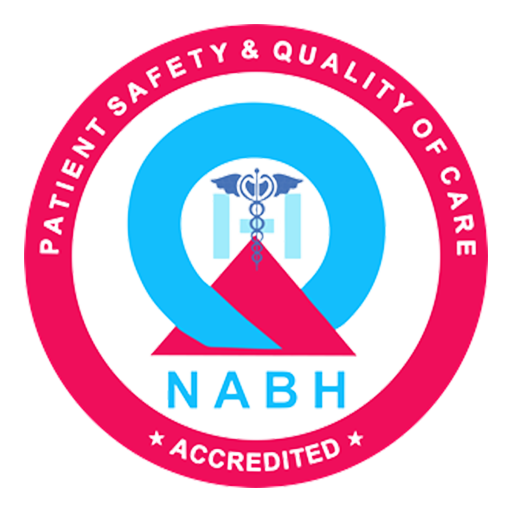Introduction
Laparoscopy, also known as minimally invasive surgery, has revolutionized the field of surgical procedures. This modern technique has become increasingly popular due to its numerous benefits, including smaller incisions, faster recovery times, and reduced risks. In this comprehensive blog post, we will explore the common facts associated with laparoscopy, shedding light on its definition, uses, advantages, procedure, risks, and recovery process. For those seeking the best laparoscopic surgeon in Kota or the best hospital for laparoscopic surgery in Kota and Rajasthan, this blog will provide valuable insights.
Definition of Laparoscopy
Laparoscopy is a surgical technique that involves making small incisions in the abdomen to insert a thin, lighted tube called a laparoscope. This instrument is equipped with a camera that transmits high-quality images to a monitor, allowing the surgeon to visualize the internal organs and perform various procedures without the need for a large, open incision.
Common Uses of Laparoscopy
Laparoscopy has a wide range of applications across various medical specialties, including gynecology, gastroenterology, and general surgery. Patients seeking the best laparoscopic surgery in Kota or the best laparoscopic doctor in Kota can benefit from the expertise of skilled practitioners in the region.
Gynecological Procedures
In the field of gynecology, laparoscopy is commonly used for procedures such as:
- Hysterectomy (removal of the uterus)
- Myomectomy (removal of uterine fibroids)
- Ovarian cyst removal
- Tubal ligation (sterilization procedure)
Gallbladder Removal
One of the most common uses of laparoscopy is for the removal of the gallbladder, a procedure known as a laparoscopic cholecystectomy. This minimally invasive approach has become the standard of care for treating gallbladder diseases, such as gallstones. Patients can explore the best hospitals for laparoscopic surgery in Kota and Rajasthan to ensure they receive top-quality care.
Appendectomy
Laparoscopic appendectomy is a minimally invasive procedure used to remove the inflamed appendix. This approach offers several advantages over traditional open surgery, including a shorter recovery time and reduced risk of complications. The best laparoscopic surgeons in Kota are skilled in performing this procedure with precision and care.
Diagnosis of Abdominal Issues
Laparoscopy can also be used as a diagnostic tool to investigate abdominal pain, infertility, or other unexplained symptoms. During the procedure, the surgeon can visually inspect the organs and tissues, take biopsies if necessary, and potentially identify the underlying cause of the issue. Patients can seek the expertise of the best laparoscopic doctors in Kota for accurate diagnosis and appropriate treatment.
Advantages of Laparoscopy
Minimal Scarring
One of the most significant advantages of laparoscopy is the minimal scarring it leaves behind. Unlike traditional open surgeries that require large incisions, laparoscopic procedures involve only a few small incisions, typically measuring less than an inch. This results in smaller, less noticeable scars, improving cosmetic outcomes.
Faster Recovery Time
Laparoscopic procedures often lead to a faster recovery time compared to open surgeries. Since the incisions are smaller, there is less trauma to the body, resulting in reduced pain, shorter hospital stays, and a quicker return to normal activities.
Reduced Pain and Risk of Infection
Patients who undergo laparoscopic surgery tend to experience less postoperative pain compared to those who undergo open procedures. Additionally, the smaller incisions and minimal tissue disruption associated with laparoscopy reduce the risk of infection and other complications.
Procedure of Laparoscopy
Preparation Before Surgery
Before undergoing a laparoscopic procedure, patients will typically undergo several preparatory steps, including:
- Fasting for a specified period to ensure an empty stomach
- Providing a medical history and undergoing necessary tests (e.g., blood work, imaging)
- Discussing the risks, benefits, and alternatives with the surgical team
- Receiving instructions on pre-operative and post-operative care
Steps of Laparoscopic Surgery
During a laparoscopic procedure, the following steps typically occur:
- Anesthesia: The patient is administered general anesthesia to ensure they remain comfortable and pain-free throughout the procedure.
- Incisions: The surgeon makes a few small incisions, typically around the navel and lower abdomen, to create entry points for the laparoscope and surgical instruments.
- Insufflation: Carbon dioxide gas is pumped into the abdominal cavity to create a working space and improve visibility.
- Laparoscope insertion: The laparoscope, a thin tube with a camera and light source, is inserted through one of the incisions, allowing the surgeon to view the internal organs on a monitor.
- Surgical instruments: Additional instruments are inserted through the other incisions, and the surgeon performs the necessary procedure while watching the monitor.
- Closure: After completing the procedure, the surgical instruments are removed, and the incisions are closed with sutures or surgical adhesives.
Post-Operative Care
Following the laparoscopic procedure, patients are typically monitored in a recovery area before being discharged. Post-operative care instructions may include:
- Rest and activity restrictions
- Dietary guidelines
- Pain management
- Wound care
- Follow-up appointments
Risks and Complications
Potential Risks of Laparoscopy
While laparoscopy is considered a safe and minimally invasive procedure, it carries some risks and potential complications, including:
- Bleeding
- Infection
- Organ injury
- Hernia formation at the incision site
- Adverse reactions to anesthesia
How to Minimize Risks
To minimize the risks associated with laparoscopy, it is crucial to choose an experienced surgical team and follow all pre-operative and post-operative instructions carefully. Additionally, patients should disclose their complete medical history and discuss any concerns with their healthcare providers. Seeking out the best laparoscopic surgeons and hospitals for laparoscopic surgery in Kota and Rajasthan can help ensure optimal safety and care.
Recovery and Aftercare
Recovery Timeline
The recovery timeline after a laparoscopic procedure can vary depending on the specific procedure performed and the individual’s overall health. In general, most patients can expect:
- Initial recovery: The first few days after surgery may involve some discomfort, soreness, and fatigue. Pain medication may be prescribed to manage any discomfort.
- Return to normal activities: Most patients can resume light activities and return to work within a week or two, depending on the procedure and their physical condition.
- Full recovery: Complete recovery may take several weeks, during which time strenuous activities and heavy lifting should be avoided.
Tips for a Smooth Recovery
To facilitate a smooth and successful recovery after laparoscopic surgery, patients should:
- Follow the post-operative instructions provided by their healthcare team
- Get plenty of rest and avoid strenuous activities until cleared by the surgeon
- Stay hydrated and consume a healthy, balanced diet
- Engage in light exercise or walking as recommended to promote healing
- Attend follow-up appointments and report any concerning symptoms promptly
By understanding the common facts about laparoscopy, patients can make informed decisions and better prepare for their surgical experience. The benefits of this minimally invasive approach, including minimal scarring, faster recovery times, and reduced risks, have made it a preferred choice for many surgical procedures. For those seeking the best laparoscopic surgery in Kota, the best laparoscopic doctors in Kota, or the top hospitals for laparoscopic surgery in Kota and Rajasthan, it is essential to research and consult with experienced healthcare professionals to ensure the highest quality of care.



